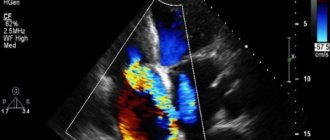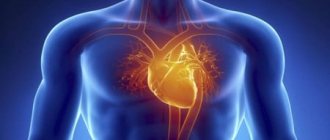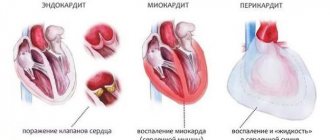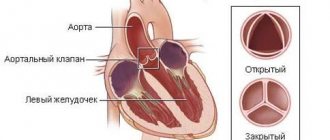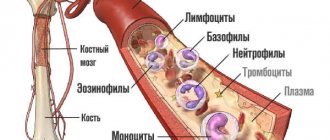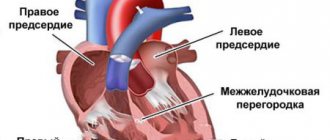Step height and ascent time during the Harvard Step Test
| Groups of subjects | Age, years | Body surface area, m2 | Step height, cm | Climbing time, min |
| Men | Over 18 | – | 50,8 | 5 |
| Women | Over 18 | – | 43,0 | 5 |
| Teenage boys | 12–18 | {amp}gt; 1.85 | 50,8 | 4 |
| Teenage boys | I2–18 | {amp}lt; 1.85 | 45,5 | 4 |
| Girls | 12–18 | – | 40,0 | 4 |
| Boys girls | 8–11 | – | 35,5 | 3 |
| Boys girls | up to 8 | – | 35,5 | 2 |
The tempo of movements is set with a metronome, the frequency of which is set to 120 beats/min. The ascent and descent consist of four movements, each of which corresponds to one beat of the metronome: 1 – the subject places one foot on the step, 2 – the other leg, 3 – lowers the leg with which he started climbing to the floor, 4 – lowers the other leg to the floor.
When placing both legs on the step, the knees should be straightened and the torso should be in a strictly vertical position. During the test, the hands perform normal walking movements. In cases where the subject is not able to complete the work for the entire specified period of time, the time during which it was completed is recorded.
Heart rate recording after the exercise is performed in a sitting position during the first 30 s of the 2nd, 3rd and 4th minutes of recovery.
where IGST is the Harvard step test index in conventional units; t – duration of actual physical work performed in s; f1, f2, f3 – heart rate at the 2nd, 3rd and 4th min of recovery for 30 s.
It is advisable to use the Harvard step test no earlier than 15-16 years of age.
Novacchi test
The Novacchi test is used to directly determine general physical performance in active athletes. It is based on determining the time during which the subject is able to withstand physical activity of stepwise increasing power. The load is performed on a bicycle ergometer, selected strictly individually and expressed in Watts per kilogram of body weight - W/kg (1 W = 6 kgm/min).
The subject is asked to perform work on a bicycle ergometer, the initial power of which is 1 W/kg. Every 2 minutes of pedaling, the load power is increased by 1 W/kg until the subject refuses to perform the work.
All safety precautions must be taken during testing, as with any test involving extreme loads.
For a more accurate assessment of an athlete’s functional readiness, it is necessary to record the duration of work to failure in seconds.
How to calculate the index
The endurance rating is determined by the index. It reflects how quickly the heart restores its normal rhythm after exercise. The shorter this time, the better the index, and therefore the fitness level. Calculation method:
- Add up all 3 heart rate measurements obtained.
- Divide 100 by the resulting amount.
- The result of the 2nd action is multiplied by 2, and then by the time that was sustained by the subject (5 minutes - maximum).
For screening tests or the need for a quick sample, pulse rate can be measured once.
In this case, one result is taken for calculation, and instead of the coefficient “2” the number is multiplied by 5.5. The remaining stages remain unchanged.
Watch the video about the Harvard Step Test Index:
Harvard step test in assessing the functional state of boys 17-18 years old
UDC 612.16-055.1
R.M. VORONIN
Academy of the Federal Penitentiary Service of Russia, Ryazan
Our study conducted a comparative assessment of the results of the Harvard step test in various groups of young people. 201 conscripts, 286 students, 104 cadets were examined. The results obtained indicate the existing differences in these groups.
Key words: Harvard step test, functional state, conscripts, students, cadets.
Issues of assessing the functional state of young people attract special attention, including from the point of view of preparing young men for military service. Military service involves significant physical and psychological stress, which requires the conscript to have significant physiological reserves
Military service involves significant physical and psychological stress, which requires the conscript to have significant physiological reserves.
It is generally accepted that the level of physical performance is the most significant criterion for assessing an individual’s adaptive abilities.
The cardiovascular system with its regulatory apparatus can also be considered as a sensitive indicator of adaptive reactions of the whole organism.
The purpose of the study was a comparative assessment of the functional state of various groups of people of military age based on data from the Harvard step test.
Materials and methods.
Three groups of people of military age were examined: conscripts (young men conscripted into the Armed Forces of the Russian Federation) – 201 people; students of the Ryazan State Medical University (recognized as fit for military service, but having a deferment for the period of study) - 286 people; cadets of the Academy of the Federal Penitentiary Service of Russia - 104 people.
The age of all subjects was 17-18 years. The basis of the step test was climbing onto a bench 50 cm high with a frequency of 30 cycles per minute (120 steps) for 5 minutes. The Harvard Step Test Index (HST) was determined using the following formula: HST = (t * 100) / (n * 5.5), where t is the ascent time in seconds;
During the study, systolic (SBP) and diastolic blood pressure (DBP) were also recorded, and calculated indicators were determined: mean pressure (MAP = (SBP DBP)/2), pulse pressure (PP=SBP-DBP), Robinson index ((SBP* Heart rate)/100) .
analysis with appropriate reliability criteria (t – probabilistic error; Student’s t-test).
Results and its discussion. Our study determined the state of the cardiovascular system of various categories of conscripts at rest and after physical activity (Table 1).
Table 1
Indicators of blood circulation of persons of military age at rest and after physical activity, (M st)
Conscripts (1) Students (2) Pd 1-2 Cadets (3) Pd 1-3 Pd 2-3
rest PP, mm Hg. Art. 44.38 ± 8.83 43.24 ± 7.75 {amp}gt; 0.05 43.53 ± 6.87 {amp}gt; 0.05{amp}gt; 0.05
Average pressure, mmHg Art. 100.94 ± 4.57 101.08 ± 4.20 {amp}gt; 0.05 99.12 ± 4.60
physical activity PD, mm Hg. Art. 93.75 ± 11.41 94.73 ± 11.94 {amp}gt; 0.05 79.90 ± 8.37
Average pressure, mmHg Art. 122.50 ± 6.56 120.88 ± 5.69
Robinson index, rel. units 171.79 ± 18.95 165.34 ± 17.52
According to our study, the heart rate of 17-18-year-old boys at rest was 75.25±6.97 beats per minute and did not have statistically significant differences between categories.
This feature can be explained by slightly different experimental conditions: if for cadets the examination took place in a familiar environment, by people well known to them, then conscripts were examined at the reception point of the military commissariat, and students - at the department of military and extreme medicine, that is, in the last two cases, Despite the measures taken to unify the experimental conditions, there may have been an influence of a psychological factor (the “white coat syndrome”), which led to an increase in blood pressure, although not pronounced, but, in the conditions of a mass experiment, statistically significant.
After exercise, significant differences were noted between groups. For example, statistically significant differences were determined (p
Table 73
Indications for the test
The test was developed at Harvard University in 1943, after which it is named. There are several modified versions of the original Harvard Step Test; examples include the Tecumseh and Porridge step-by-step test. Another modified version, the Sharkey Step Test, was developed in the 1970s for use by the U.S. Forest Service at the University of Montana in Missoula.
To assess physical fitness, you can conduct a minimal test: quickly walk up 5 steps. The test may seem too simple to be useful. However, several years before sophisticated exercise testing became widely available, thoracic surgeons used this method to test whether their patients were fit enough to undergo lung surgery.
In modern conditions, people who have passed the test have maximum oxygen absorption values. This level will help you get through surgery and carry out daily activities. However, healthy people should use exercise to reach levels 2 or even 3 times higher.
How does the Harvard step test work?
Often a sports club asks you to take a step test for self-assessment. One 12-inch step or bench is also used for the study. With a little help, you can take the test yourself. It is necessary to ask a friend to time it so that you can directly focus on the task (leg).
The step test can be quite challenging. If a heart defect has been diagnosed, it is recommended to consult a doctor. And if a person is not in shape or thinks that the test may be difficult, it is recommended to do a preliminary test for 1 minute.
7.7. 1. International Physical Fitness Test (jcspft)
1. 50m run.
2. Standing long jump.
3(a). 600 m run (for children under 11 years old).
3(b). 800 m running (for female subjects aged 12 years and older).
3 (c). Running a distance of 1000 m (for boys from 12 years old and older).
4. Brush strength.
5(a). Hanging on bent arms (for girls, girls and women of all ages and boys up to 11 years old).
5 B). Pull-ups while hanging on a bar (for boys 12 years and older).
- Shuttle run 4x10 m.
- Exercise “lie down and sit down” for 30 seconds.
- Bend the torso forward from a standing position.

The test is recommended to be carried out within two days. On the first day, tests 1, 2 and 3 are performed; in the second – 4–8. All tests can be carried out on the same day, but in this case test 3 should be done last.
Task 2
Monitor your condition regularly with simple tests. During the training you will be provided with a dozen simple testing methods. Today I will talk about two ways to check your heart. And I will give all the necessary explanations for evaluating the results.
Ruffier-Dixon test
You are already familiar with this test, since Dmitry already gave it to you at the very beginning. If you have already completed the test and its results do not raise any doubts, you do not have to do it again. But don't forget to record your results in a diary, as mentioned above.
The Ruffier-Dixon test allows you to quickly check the condition of your heart, as well as the degree of nervous and physical fatigue. This is a great indicator that will immediately show two things.
1. If you are a beginner, the Ruffier-Dixon test will tell you what to focus on at the very beginning of your sports journey.
2. If you are already an experienced athlete, the test will show if your training program is too intense, if the weights are too heavy, if you are not getting enough rest, etc.
How to perform the Ruffier-Dixon test
To perform the test, you only need a stopwatch.
Choose a relatively quiet time during the day. You must be calm and not rush anywhere. Sit down and take your pulse for 15 seconds. In the formula this will be the P1 indicator.
Then do 30 squats in 30 seconds. Breathe rhythmically and deeply enough so that the test results are more or less objective. Immediately after your thirtieth squat, take your heart rate for 15 minutes. In the formula this will be the P2 indicator.
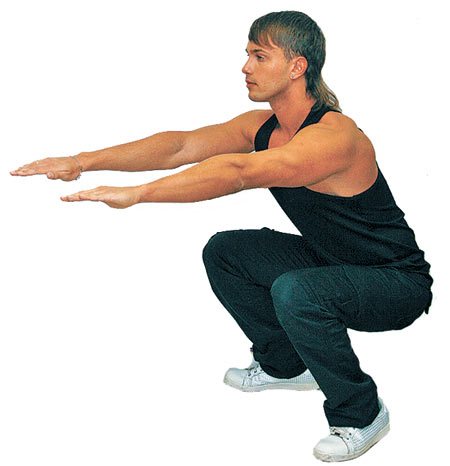
Sit down on a chair and exactly a minute later count your pulse again for 15 seconds. In the formula this will be the P3 indicator.
Now let’s calculate the Ruffier-Dixon index using the formula:
Features and advantages of the method
The Harvard Step Test is based on the idea that fitness level can be assessed by how long a person can bear a submaximal load. The second criterion is how quickly after it the heart rate returns to normal.
When developing the test, an attempt was made to incorporate physical activity in a strictly dosed form into the methodology. But since the factor of the individual power of the movements performed is not taken into account, the measurements are considered conditionally dosed.
The advantages of this method include simplicity and the absence of the need for special measuring instruments, as well as the ability to determine the level of physical performance, despite the fact that the subject may not be able to withstand the fixed test parameters.
Table 73
Step test
A step test is another simple way to check your heart health and fitness level. Do it regularly, every month. Record the results in your diary.
To carry out this test, you will need a regular step in the entrance or on the porch of your house and a stopwatch. Any strong object (for example, a step platform, a low bench, a stool, a box) with a height of 17-25 cm is also suitable. Strictly speaking, the height of the step will affect the results, however, such accuracy is quite sufficient for a simple check of the general condition of the heart.
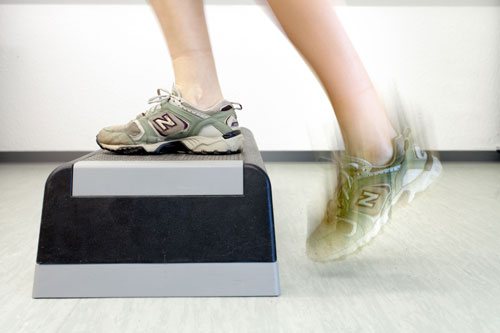
Stand in front of the step and begin to step onto it, alternately with one foot and then with the other. Do this rhythmically at a rate of about 60 steps per minute. That is, each step and return should take about 1 second.
Perform this exercise for 3 minutes exactly. After this, immediately start counting your heart rate for 1 minute. Not in 10 seconds followed by multiplication by 6, but in a minute. Check the result with this table:
| Level of preparation | 18-25 years | 26-35 years | 36-45 years | 46-55 years | 56-65 years | 65+ |
| Great | Below 79 | Below 81 | Below 83 | Below 87 | Below 86 | Below 88 |
| Good | 79-89 | 81-89 | 83-96 | 87-97 | 86-97 | 88-96 |
| Above average | 90-99 | 90-99 | 97-103 | 98-105 | 98-103 | 97-103 |
| Average | 100-105 | 100-107 | 104-112 | 106-116 | 104-112 | 104-113 |
| Below the average | 106-116 | 108-117 | 113-119 | 117-122 | 113-120 | 114-120 |
| Weak | 117-128 | 118-127 | 120-130 | 123-132 | 121-129 | 121-130 |
| Very weak | Above 128 | Above 128 | Above 130 | Above 132 | Above 129 | Above 130 |
What to do with these indicators?
- If you are at an excellent or good level of fitness, your workouts can include a minimum of low-intensity cardio. And this also means that the doors to strength training, circuit training and interval cardio training are open for you. You will be able to withstand these methods quite easily, and they will bring you very noticeable results, since the intensity of the training can be quite high.
A high test score may mean that you have been running for a long time or have a naturally high stroke volume, which is a good thing.
— If your level of fitness is close to average, therefore, your workouts should be supplemented with low-intensity cardio training to increase the stroke volume of the heart. This means that three times a week you need to do at least half an hour of training in the aerobic zone (there will also be a separate post about this). A tangible result (measured by a step test) from these classes will be noticeable after 2 or more months.
- If your fitness level is weak or very weak, you need to start walking daily for an increasingly increasing distance. And when the duration of walks per day reaches 1.5-2 hours, switch to walks on hilly terrain or low-intensity running to increase the stroke volume of the heart. You should not start strength training, fat burning, or any other training at this level of training until you have reached at least an intermediate level.
European Physical Fitness Test
Table 45
| Magnitude | Factor (ability) | Test | The order of application of tests |
| General muscle endurance | General (aerobic, respiratory capacity) endurance | Ergometric running - Rover test (PWC170) | 9 |
| Force | Static force | Hand dynamometry | 5 |
| Dynamic (explosive) force | Standing long jump | 4 | |
| Endurance muscles | "Functional strength" | Hanging on bent arms | 7 |
| Core strength | “Lie down and sit down” in 30 s | 6 | |
| Rapidity | Agility running | Shuttle run 10×5 m | 8 |
| Speed of hand movements | Touching circles (tapping test) | 2 | |
| Flexibility | Flexibility | Bend forward in a sitting position | 3 |
| Equilibrium | Whole Body Balance | Maintaining balance on one leg | 1 |
| Anthropometric (body) measurements | Body length (cm), body weight (kg), subcutaneous fat thickness (at the level of the biceps and triceps muscles, on the waist, under the shoulder blade, on the side of the body and on the lower leg) | ||
| Data | Age (years, months) | ||
| Floor | |||
Touching circles.
Equipment: table with adjustable height; 2 rubber mugs (each 20 cm in diameter) attached to the table; a plate measuring 10x20 cm (size between circles), stopwatch.
Testing procedure. The subject stands in front of the table at a short distance (80 cm from the middle of the circles). The palm of the less dexterous hand is placed on the plate. The palm of the more dexterous hand is lowered crosswise onto the lying less dexterous hand. At the signal, the subject must, as quickly as possible, alternately, touch (touch) one and the other circle with a more dexterous hand. He must touch each circle 25 times, for a total of 50.
The result is the time that the subject will spend touching each circle 25 times (with an accuracy of 0.1 s). In this case, the displayed time, for example, 10.2 s gives a result of 102 points. Of the two attempts, the best result is taken into account.
Shuttle run 10x5 m.
Equipment: stopwatch, measuring tape, chalk, 4 rubber cones at a distance of 120 cm from each other, two installed on each of the boundary lines, 500 cm apart from each other.
Testing procedure. The subject on the command “March!” runs as quickly as possible from one line to another, crossing them with his feet, and so on 10 times.
The result is the task execution time with an accuracy of 0.1 s. This time, however, must be multiplied by 10. For example, 24.5 s gives a result of 245 points.
Symptoms of hypertrophic subaortic stenosis
Symptoms of hypertrophic subaortic stenosis can vary in intensity. It depends on the degree of development of the disease, the age of the patient and other factors, for example, the presence of concomitant diseases.
The main symptoms are:
- complaints of chest pain;
- fainting, especially after heavy exertion, but can also occur after moderate exertion;
- arrhythmia;
- overload of the left atrium and, as a result, increased pressure;
- the skin is normally colored;
- in severe forms of subaortic stenosis, a lateral displacement of the apex impulse is observed, as well as its intensification or doubling;
- a dicrotic pulse can be felt on the carotid arteries;
- venous pressure increases;
- the jugular vein is stretched;
- swelling of the legs, ankles, legs;
- ascites;
- prenatal effusion;
- when listening, a noise caused by regurgitation and deformation of the mitral valve is noticeable;
- noise characteristic “blowing”;
- systolic murmur increases when standing and decreases when lying down;
- The pulse often does not change.
Standard requirements for American schoolchildren in trunk flexion
| Age, years | Boys | Girls |
| 6 | 12,1 | 12,4 |
| 7 | 11,5 | 12,1 |
| 8 | 11,1 | 11,8 |
| 9 | 10,9 | PD |
| 10 | 10,3 | 10,8 |
| 11 | 10,0 | 10,5 |
| 12 | 9,8 | 10,4 |
| 13 | 9,5 | 10,1 |
| 14 | 9,1 | 10,1 |
| 15 | 9,0 | 10,0 |
| 16 | 8,7 | 10,1 |
| 17 | 8,7 | 10,0 |
*Note. According to American studies, only 15% of children fulfill the standards presented in the tables.
Table 49
| Subjects | Age, years | |||||||||||
| 6 | 7 | 8 | 9 | 10 | 11 | 12 | 13 | 14 | 15 | 16 | 17 | |
| Boys | 33 | 36 | 40 | 41 | 45 | 47 | 50 | 53 | 56 | 57 | 56 | 55 |
| Girls | 32 | 34 | 38 | 39 | 40 | 42 | 45 | 46 | 47 | 48 | 45 | 44 |
The results are recorded in the protocol according to the form.
PROTOCOL No....
Test results for students of _________ class
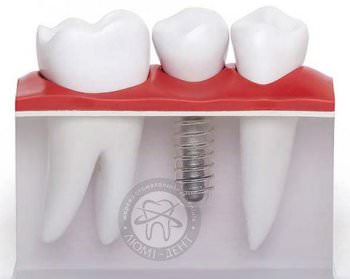
________schools in Moscow “____” September 20
Test: 1 mile run (1609 m)
Air temperature:__________
| No. | F.I.6. | Age*, years | Result, s | Note |
| 1 | Ivanov Ivan | 8 | 7,56 | Has been figure skating for 2 years |
| 2 | Petrova Sveta | 8 | 10,36 | |
| 3 | Kuznetsova Ira | 8 | 11,25 | 5-11.08 was sick with acute respiratory infection |
| 4 | Sidorova Galya | 8 | 12,02 |
____________________________Physical education teacher
__________________________Classroom teacher
The mechanism of development of hypertrophic subaortic stenosis. Complications of subaortic stenosis
Blood passing through a narrow area - between the heart septum and the mitral valve leaflets, creates a kind of low pressure zone. This condition is called the Bernoulli effect. Thus, the anterior valve leaflet moves towards the septum, and the outflow tract of the left ventricle narrows. The degree of this narrowing is purely individual; in addition, it can change over time, weakening or worsening.
The more a person subjects himself to physical activity, the more the left ventricle increases in size, in addition, the septum and mitral valve leaflet move away from each other, thereby exacerbating the obstruction. These processes often lead to secondary ventricular hypertrophy. The free walls of the ventricle remain of normal size.
Dangerous complications of subaortic stenosis are the following conditions:
- arrhythmias of various types;
- congestive heart failure;
- atrial fibrillation;
- mural thrombi in the atria;
- development of infective endocarditis.
In the absence of treatment, the terminal stage of the disease and death occurs. Death can also occur suddenly, without a pronounced deterioration in condition.
Causes of hypertrophic subaortic stenosis
The main causes of hypertrophic subaortic stenosis are similar to the causes of cardiomyopathy, since in fact the disease is a form of cardiomyopathy.
These include:
- genetic predisposition;
- long-term high blood pressure;
- damage to heart tissue during a heart attack;
- chronically rapid heartbeat;
- heart valve diseases;
- metabolic disorders such as obesity, thyroid disease or diabetes;
- dietary deficiencies of essential vitamins and minerals such as thiamine (vitamin B1);
- complications of pregnancy;
- long-term alcoholism;
- use of cocaine, amphetamines or anabolic steroids;
- the use of certain chemotherapy drugs and radiation to treat cancer;
- infections that can injure the heart and cause cardiomyopathy (staphylococcal, streptococcal bacteria and others);
- accumulation of iron in the heart muscle (hemochromatosis);
- sarcoidosis is a disease that causes inflammation and intense cell growth;
- amyloidosis - accumulation of abnormal proteins;
- connective tissue diseases.
Errors in results
The results of the study can be distorted by the incorrect behavior of the person being tested, that is, by his unclear execution of the trainer’s instructions. Frequent violations include non-compliance with rhythm (accelerating or slowing down steps relative to the metronome), stooping (the back should be in a clearly vertical state), placing the foot on the toe rather than on the full foot, and legs not straightened at the knee joints.
To avoid mistakes, the person taking the step test should be given detailed instructions before training. Harvard testing is a simple, accessible and informative method. Once you know your endurance level, you can balance your physical activity to improve your athletic performance while maintaining a healthy heart.
All materials are published under the authorship or editorship of medical professionals (about the authors), but are not a prescription for treatment. Contact the specialists!
When using materials, a link or indication of the source name is required.
Author: Sazykina Oksana Yurievna, cardiologist
To study the endurance of the heart muscle and the fitness of the body, several simple but informative techniques are used. Often these studies are conducted to study the physical performance of healthy adults who play sports professionally or work in fields that require high activity (firefighters, military personnel, etc.).
CLAIM
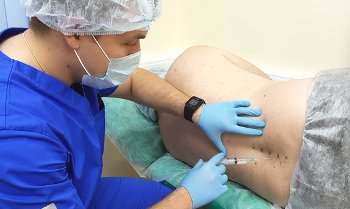
1. A set of step platforms of different heights for conducting functional load tests, containing at least two step platforms, characterized in that each of the subsequent step platforms has geometric dimensions smaller than the previous one, and each of the step platforms set is made in the form of a hollow thin-walled truncated quadrangular pyramid, the angles of inclination of the side surfaces to the base of which are made acute with maximum approximation to right angles, and the values of the above angles are selected from the condition of ensuring the possibility of removing the platforms from the injection mold and the possibility of inserting one platform to the maximum depth to the other, while on the outside, the upper working surface of each platform is made to resist sliding, on the inside, each platform contains longitudinal and transverse stiffeners, and the two oppositely located sides of each platform are equipped with protrusions extruded along its entire height, forming grooves between them and having a trapezoidal cross-section, the dimensions of the protrusions and the width of the grooves are selected from the condition of the possibility, when docking platforms, of placing the protrusions of one step platform in the grooves of another, the kit also additionally contains a mat made of elastomeric material with a high coefficient of friction, on the outer surface of which the joining elements are located, made with the possibility of placement in the internal cavities of the trapezoidal protrusions of the platforms during docking.
2. The set according to claim 1, characterized in that the step platforms are made of polypropylene.
3. The set according to claim 1, characterized in that the step platforms are made of colored polypropylene - red, orange, yellow, green, blue, light blue.
4. The set according to claim 1, characterized in that in the middle part of the side surface there is a recess, which is a rectangular recess with wedge-shaped sides expanding towards the base.
5. The set according to claim 4, characterized in that on the highest platform in the lower part of the wedge-shaped expanding recess there is a handle in the form of a segment of a U-shaped profile connecting the sides of the recess.
6. The set according to claims 1-5, characterized in that the width of the mat is selected from the conditions for its diagonal insertion into the assembled set of step platforms.
7. The kit according to claims 1-5, characterized in that the working surface of each of the platforms of the kit is equipped with recesses for installing nameplates with logos and/or technical characteristics of the platforms.
8. A method for manufacturing a set of uneven-high platforms for conducting functional load tests according to claims 1-7, including the manufacture of a mold containing a matrix and a punch with a geometry that provides a given shape of the step platform, subsequent thermopress casting of molten polymer into the mold and obtaining a finished platform, and step platforms of a smaller geometric size are obtained by cutting from step platforms of a larger size.
9. The method according to claim 8, characterized in that to eliminate shrinkage deformations during cooling of the step platforms, spacers of a responsive shape corresponding to the internal geometry of the step platform are inserted into the latter during the period of their cooling.
Standard requirements for American schoolchildren in trunk flexion
Table 49
PROTOCOL No....
| Age, years | Level | Points | Sitting from a supine position, quantity. once every 1 minute | Standing long jump, cm | Bend forward while sitting, cm | Hanging on bent arms, with | Shuttle run 4×10 m, s | Run 2400 m, min, s |
| 12 | A | 5 | 41 | 201 | 62 | 4 | 10,7 | 1:31 |
| IN | 4 | 38—41 | 192—201 | 54—62 | 4 | 10,7—11,0 | 11:31—12:20 | |
| WITH | 3 | 34—37 | 182— 191 | 55—58 | 3 | 11,1—11,4 | 12:21—13:10 | |
| D | 2 | 30—33 | 172— 181 | 51—54 | 2 | 11,5—11,8 | 13:11—14:00 | |
| E | 1 | 26—29 | 162— 171 | 47— 50 | 1 | 11,9—12,2 | 14:01—14:50 | |
| 15 | A | 5 | 42 | 237 | 65 | 7 | 10,2 | 10.31 |
| IN | 4 | 40—42 | 228— 237 | 62— 65 | 6 | 10,2—10,3 | 10:31—11:20 | |
| WITH | 3 | 37—39 | 218—227 | 58—61 | 5 | 10,4—10,5 | 11:21—12:10 | |
| D | 2 | 34—36 | 208—217 | 54— 57 | 3—4 | 10,6—10,9 | 12:11—13:00 | |
| E | 1 | 30—33 | 198— 207 | 49—53 | 2 | 11,0—11,3 | 13:01—13:50 | |
| A | 5 | 42 | 249 | 66 | 9 | 10,2 | 10:11 | |
| IN | 4 | 40—42 | 240— 249 | 62—66 | 8—9 | 10,2—10,3 | 10:11—11:00 | |
| WITH | 3 | 37—39 | 230-^- 239 | 58—61 | 6—7 | 10,4—10,5 | 11:01—11:50 | |
| D | 2 | 34—36 | 220— 229 | 54—57 | 5 | 10,6—10,7 | 11:51—12:40 | |
| E | 1 | 31—33 | 210—219 | 49—53 | 3—4 | 10,8—10,9 | 12:41—13:30 |
Table 53
| Age, years | Level | Points | Sitting from a supine position, quantity. once every 1 minute | Standing long jump, cm | Bend forward while sitting, cm | Hanging on bent arms, with | Shuttle run 4×10 m, s | Run 2400 m, min, s |
| 12 | A | 5 | 29 | 167 | 60 | 35 | 12,0 | 15:06 |
| IN | 4 | 26—29 . | 159—167 | 57—60 | 28—35 | 12,0—12,3 | 15:06—16:05 | |
| WITH | 3 | 22—25 | 150— 158 | 53—56 | 21—27 | 12,4—12,7 | 16:06—17:05 | |
| D | 2 | 18—21 | 141— 149 | 49—52 | 14—20 | 12,8—13,1 | 17:06—18:05 | |
| E | 1 | 14—17 | 132— 140 | 45— 48 | 7—13 | 13,2—13,5 | 18:06—19:05 | |
| 15 | A | 5 | 30 | 182 | 65 | 44 | 11,3 | 14:36 |
| IN | 4 | 29—30 | 174— 182 | 62—65 | 37—44 | 11,3—11,6 | 14:36—15:25 | |
| WITH | 3 | 25—28 | 165—173 | 58— 61 | 30—36 | 11,7—12,0 | 15:26—16:20 | |
| D | 2 | 21—24 | 156— 164 | 54—57 | 23—29 | 12,1—12,4 | 16:21—17:20 | |
| E | 1 | 17—20 | 147— 155 | 49—53 | 16—22 | 12,5—12,8 | 17:21—18:15 | |
| A | 5 | 30 | 189 | 67 | 45 | 11,2 | 14:31 | |
| IN | 4 | 29—30 | 181—189 | 64— 67 | 42—45 | 11,3—11,5 | 14:31—15:05 | |
| WITH | 3 | 27—28 | 172—180 | 59— 63 | 35—41 | 11,6—11,8 | 15:06—16:00 | |
| D | 2 | 23—26 | 163— 171 | 54—58 | 28—34 | 11,9—12,1 | 16:01—16:50 | |
| E | 1 | 19—22 | 154—162 | 49—53 | 21—27 | 12,2—12,5 | 16:51—17:45 |
Treatment of subaortic hypertrophic stenosis
Drugs for the treatment of subaortic hypertrophic stenosis are:
- calcium channel blockers;
- adrenergic blockers in a dosage of up to 320 mg per day;
- various antibiotics, for example, from the penicillin group, as well as cephalosporins and aminoglycosides.

The following drugs are contraindicated:
- diuretics and nitrates, which reduce left ventricular volume;
- catecholamines and cardiac glycosides. They aggravate obstruction and have no effect on diastolic pressure;
- Vasidilators. They can provoke tachycardia due to increased pressure in the excretory tract.
Surgical treatment
Involves several possible procedures:
- replacement of the mitral valve with a prosthesis;
- myomectomy (with removal of part of the interventricular septum).
Additional recommendations
Patients should limit physical activity. Strength sports, as well as exhausting training, are contraindicated. Swimming, walking, cycling, hiking are shown. In cases of severe ventricular arrhythmia, left ventricular hypertrophy, or a large pressure difference between the aorta and ventricle, physical activity is excluded.
Article sources: https://circ.ahajournals.org/https://www.ncbi.nlm.nih.gov/https://umm.edu/
Based on materials from: 2016 University of Maryland Medical Center (UMMC). EUGENE BRAUNWALD, MD, COSTAS T. LAMBREW, MD, S. DAVID ROCKOFF, MD; JOHN ROSS JR., MD, ANDREW G. MORROW, MDNational Center for Biotechnology Information,US National Library of Medicine
How to learn to cope with stress?
Can drinking coffee cause dehydration?
Products that will allow you to be energetic even in autumn
4 Unusual Benefits of Exercise
When is it dangerous to use oil and water on burns?
Why do people choose similar partners even after bad relationship experiences?
Dental implantation - advantages and choice of clinic

Spinal block - instant relief from back pain
Poisonous seasoning, to eat or not to eat in open street cafes
Online service SKIN.EXPERT – healthy skin in one click
- Chronic rheumatic heart disease. Rheumatic mitral valve regurgitation (regurgitation)
- Exercise and the heart
- Atrial fibrillation
- Combined lesions of the heart valves
Decoding the results
| Grade | Harvard Step Test Index | ||
| Untrained healthy people | People involved in cyclic sports | Those involved in acyclic sports | |
| Badly | below 56 | below 71 | below 61 |
| Below the average | from 56 to 65 | from 71 to 80 | from 61 to 70 |
| Average | from 66 to 70 | from 81 to 90 | from 71 to 80 |
| Above average | from 71 to 80 | from 91 to 100 | from 81 to 90 |
| Fine | from 81 to 90 | from 101 to 110 | from 91 to 100 |
| Great | above 90 | above 110 | above 100 |


